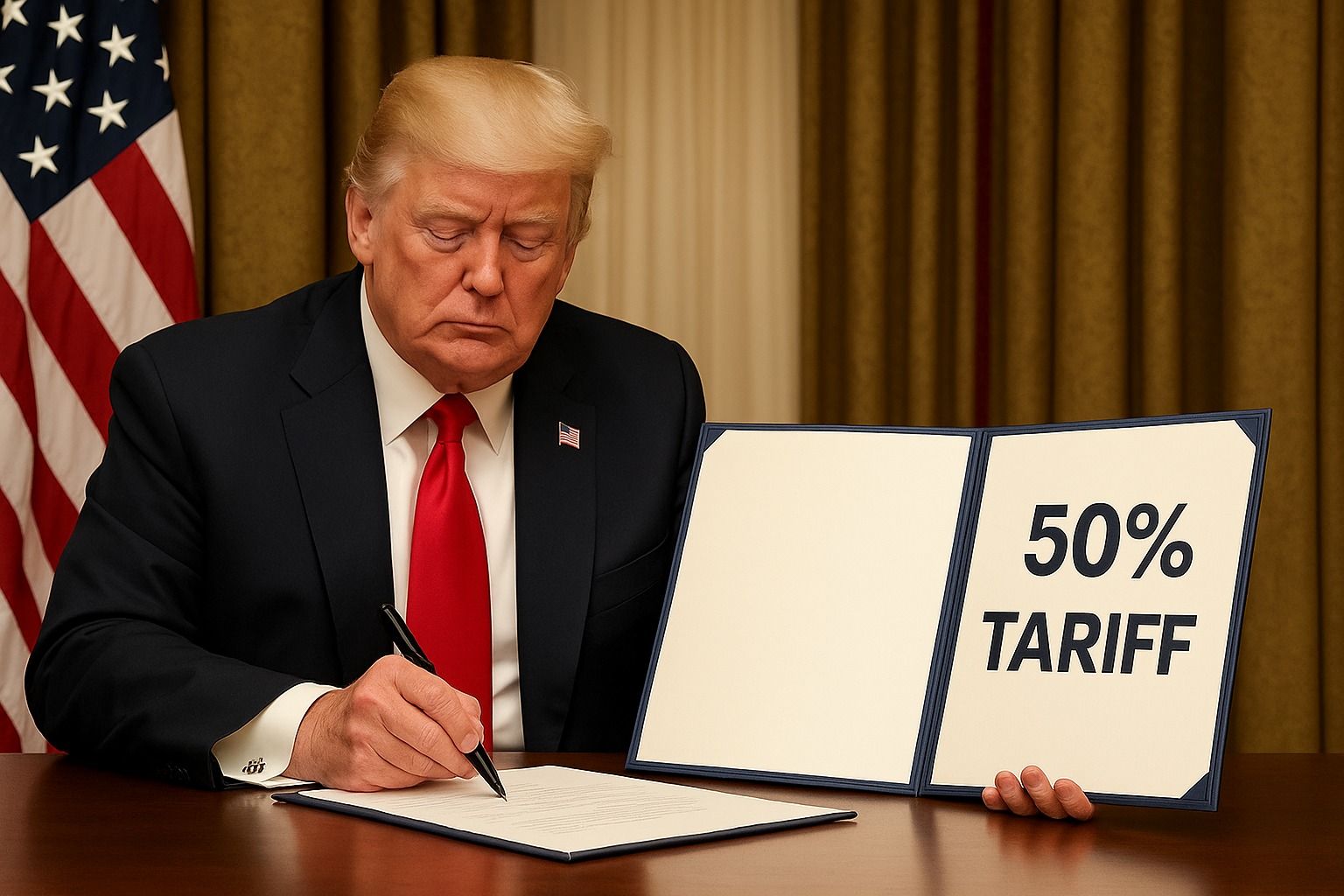The recent decision by US President Donald Trump to impose a 50% tariff on Indian imports—citing New Delhi’s continued purchase of Russian oil—marks a turning point not only in US-India relations but in the global economic and geopolitical landscape. While the move may appear to be a targeted economic sanction, its ripple effects could be far-reaching, with consequences that extend well beyond bilateral trade.
India, now the world’s most populous country, is not just a regional power—it is a global economic engine. Its massive labor force, growing manufacturing sector, and expanding middle class make it a key player in global supply chains. Imposing high tariffs on Indian goods is not a minor adjustment; it is a tectonic shift. The economic and political aftershocks of this decision will reverberate across continents.
From an economic standpoint, the immediate impact on India could be severe. The United States is one of the largest export markets for Indian goods, ranging from textiles and pharmaceuticals to industrial chemicals and seafood. Losing access to this market—or facing prohibitive tariffs—will likely reduce India’s export revenues, weaken the rupee, and slow down GDP growth. A depreciated rupee could lead to Indian products flooding neighboring markets, putting local producers at a disadvantage against cheaper Indian goods.
But the consequences won’t stop at India’s borders. As Indian exporters seek alternative markets to compensate for lost access to the USA, they will inevitably turn toward Europe, Southeast Asia, and other regions. This shift will intensify competition in those markets, particularly in sectors where India already has a cost advantage due to its cheap labor and large-scale production. Countries like Turkiye, which rely heavily on exports to Europe, may find themselves squeezed by a flood of lower-priced Indian goods.
This dynamic could also trigger a wave of protectionist policies across the affected countries. As competition intensifies and local industries feel the pressure, governments may resort to tariffs, subsidies, and import restrictions to shield domestic producers. The rise of such protectionist measures would undermine the principles of free trade and could lead to a fragmentation of global markets—something the world can ill afford in the wake of recent supply chain disruptions and economic instability.
Despite all these economic hardships, Trump’s decision stands out as a remarkably smart and calculated move. If bold steps are not taken today, the world may face even greater challenges tomorrow. Politically, Trump’s move is clearly aimed at isolating Russia by penalizing countries that continue to engage with Moscow economically. India’s purchase of Russian oil has been a point of contention, especially as Western nations seek to cut off Kremlin’s revenue streams amid the ongoing war in Ukraine. By targeting India, Trump is sending a message: economic ties with Russia come at a cost.
This strategy could, in theory, weaken Russia’s position in the global energy market and reduce its capacity to finance its military operations. For many in Eastern Europe and the post-Soviet space, this is a welcome development. Russia’s involvement in the occupation of Garabagh in the 1990s, as well as its role in Abkhazia and South Ossetia, laid the groundwork for a pattern of unchecked aggression. Again, the world turned a blind eye to Moscow’s actions in Georgia in 2008 and Ukraine in 2014, allowing the Kremlin’s appetite for expansion to grow. Convinced that its moves would go unanswered, Russia escalated its ambitions, ultimately leading to the full-scale invasion of Ukraine in 2022.
So, if Russia emerges victorious or even partially successful in Ukraine, it could embolden further expansionist ambitions, particularly toward former Soviet republics. That’s why many believe that Russia’s “nose must be bloodied” in this conflict—not just for Ukraine’s sake, but to preserve the balance of power and deter future aggression.
If India ultimately agrees to reduce or halt its purchases of Russian oil in response to the tariffs, it will set a powerful precedent. Other nations—especially those wavering between economic pragmatism and geopolitical responsibility—may follow suit. Such a shift would accelerate Russia’s isolation, cutting off vital revenue streams and weakening its ability to sustain military aggression. In this sense, Trump’s decision could catalyze a broader coalition against Russia, reinforcing the global effort to uphold international norms and deter authoritarian expansion.
So, despite the economic risks and potential fallout, Trump’s decision to impose tariffs on India may prove to be strategically sound. It sends a clear message that economic partnerships cannot be divorced from geopolitical accountability. If the end result is a more unified front against Russian aggression and a stronger global commitment to peace and stability, then the costs—however steep—may well be justified.

